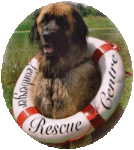Basic Training for Dogs Without Behavioural Problems
Grooming & Examination
This should be a happy well tolerated daily routine. If you regularly groom your dog they should learn to enjoy it. If a dog doesn't like grooming just get them used to having your hands go over them and then gradually introduce a grooming glove and once that is accepted you can move onto a brush. Never rush things and always be ready to take a step back until they are used to what you are trying to achieve. Mouthing should be strongly discouraged with perhaps a firm agggh or No. Always praise when the dog has responded to your correction. Build up on time spent grooming , it has no time limits and with some dogs a few seconds is a good start.
Whilst grooming check eyes, ears, teeth, paws and coat, feeling for any lumps and bumps, discolouration and also look for ticks and fleas. Once you know what your dogs body feels like when it is healthy you should soon notice a difference if he/she is becoming poorly.
Pulling on the Lead
There are many aids on the market to help us have control of our dogs including Halti's, gentle leaders, harnesses. Don't be afraid to use them, they are a much kinder aid than constantly pulling back on your dogs collar and will make walking far more pleasurable for you. Pulling is a learnt behaviour , so if your dog has learnt to pull it is sometimes difficult to correct this. Training and praise will help if you are kind and consistent.
Sits, Downs & Stands
All of these positions are first taught with a titbit, or clicker if you have been taught with one.
Sit
With a titbit in your hand, raise hand level and slightly above the dogs head, once his bottom touches the ground give the reward and say "good sit". On all exercises only give the titbit when the dog is in the position you want.
Down
Easier if your dog now knows what sit is, With your dog in a sit take your hand with the titbit in it down from the dog nose towards the paws and extend out along floor. Same as above praise when in required position.
Stand
Stand is easy but very important, it is not for just showdogs. It is important for vets examinations , grooming etc The stand should be taught once the dog has an understanding of the Sit and Down.
All the above can be done as fun exercises and should only be done when you are in the right frame of mind. Never put your dog through a training session if you are tired or in a bad mood. It is not their fault if they do not understand why todays training is different from yesterdays. Always train your dog with a smile on your face, if you are smiling you cannot be angry.
Recall
A difficult exercise. NEVER punish or reprimand a dog that finally comes back to you.
The recall should be established in the house, call..if they responds first time ..praise, if they do not ignore and try again later. Once you have immediate recall like this you can practise from room to room. They will soon realise that if they respond immediately they will get that lovely tasty titbit. You can then move on to indoors to outdoors. Once you have 100% perfection you can then work with distractions..
Never worry about going back to basics,
Once you are out try running away from your dog, turn and face him drop to your knees and hold out hands palm upwards with titbit, call and praise when they get to you.
Once your dog is responding well and is running free, call them to you, hook on lead and then let off again to play, do this randomly each time you are out. This will stop them thinking that if they come when called you are going to clip on lead and spoil his fun.

